
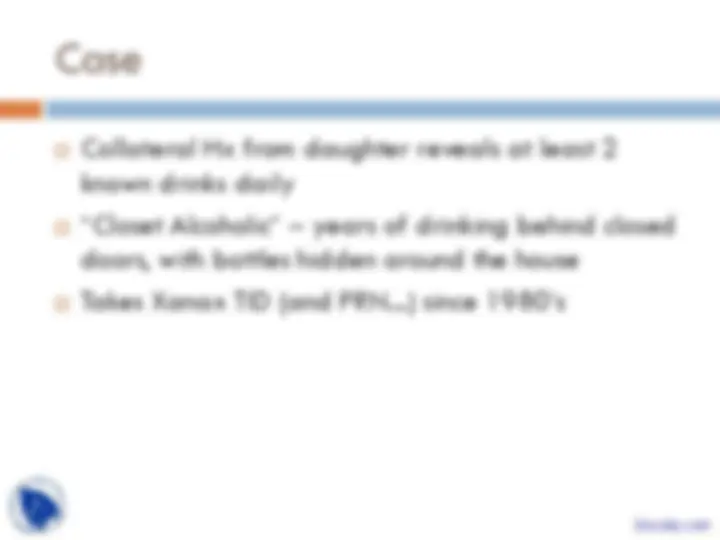

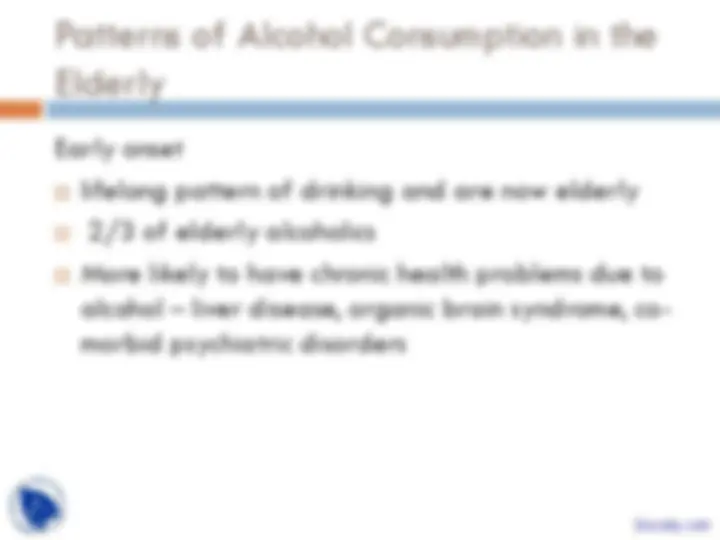
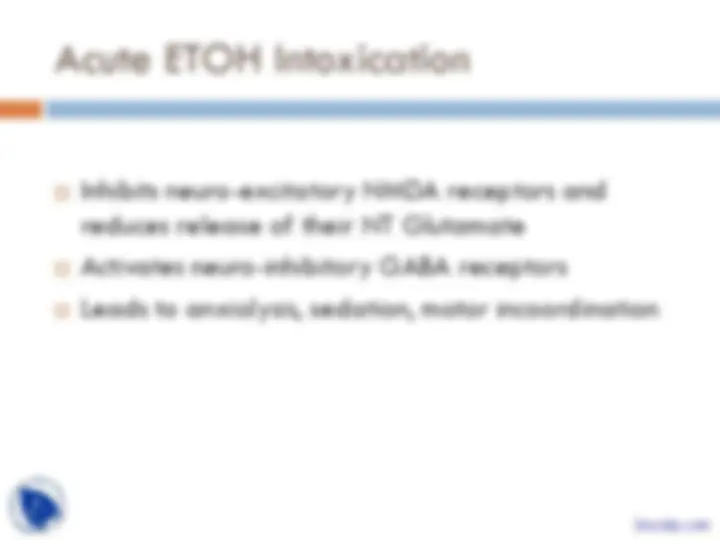
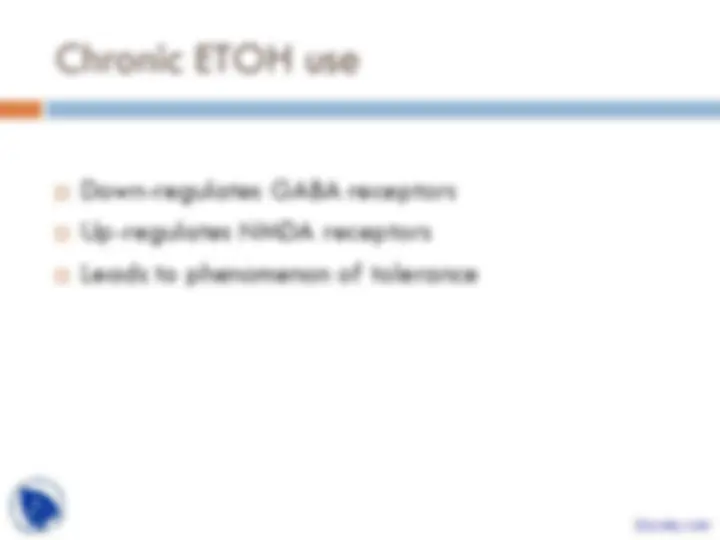
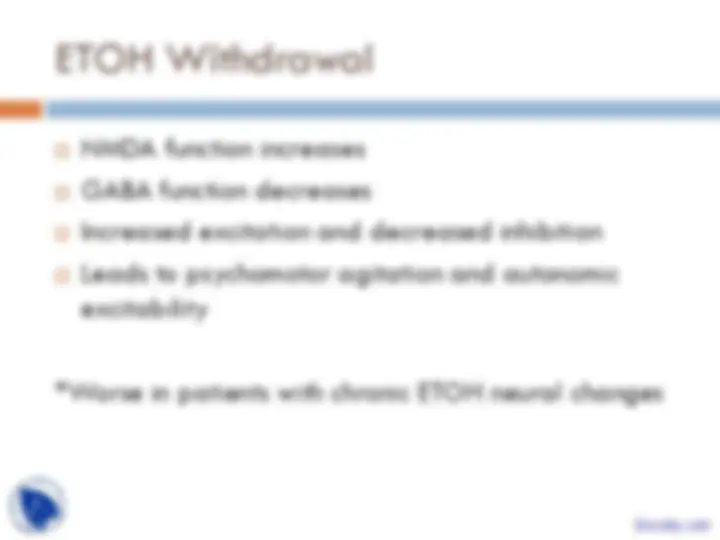
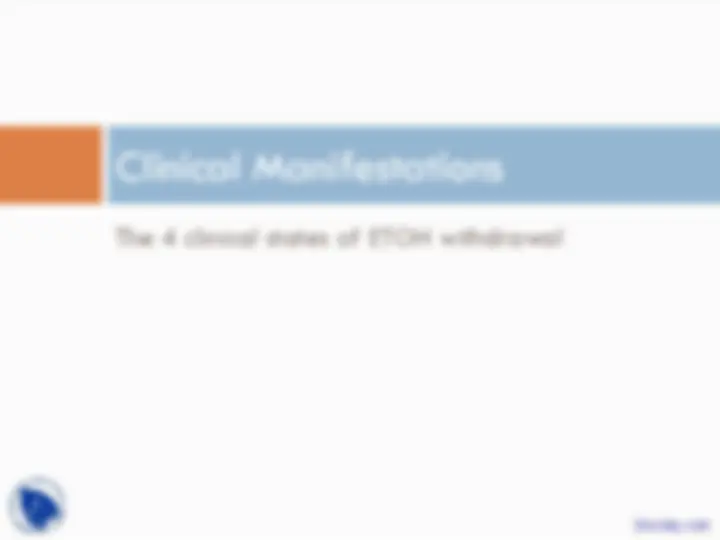
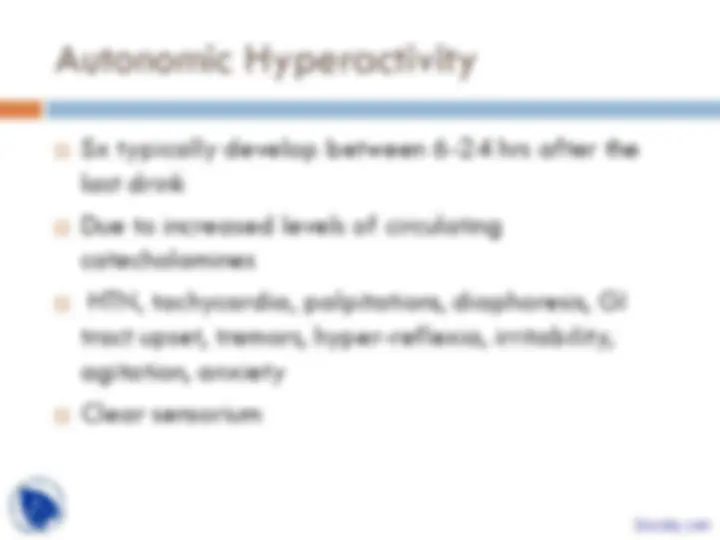
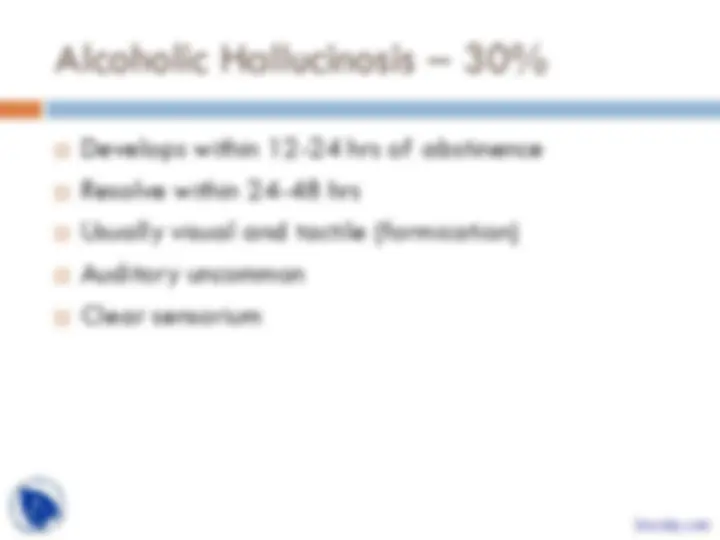
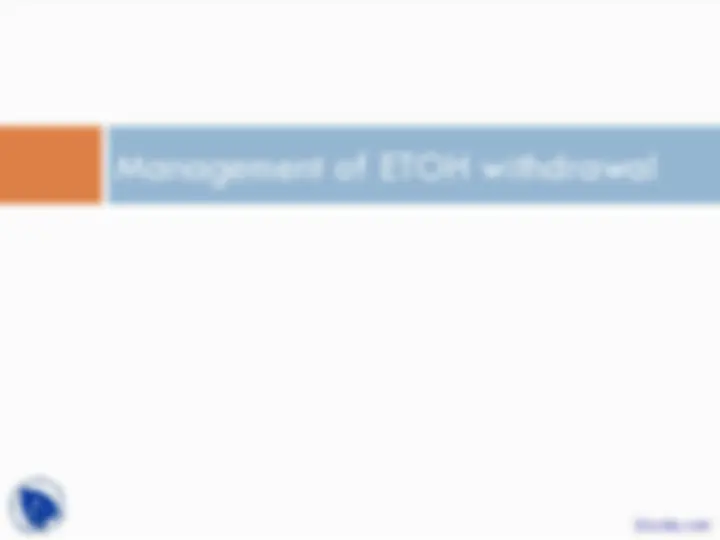
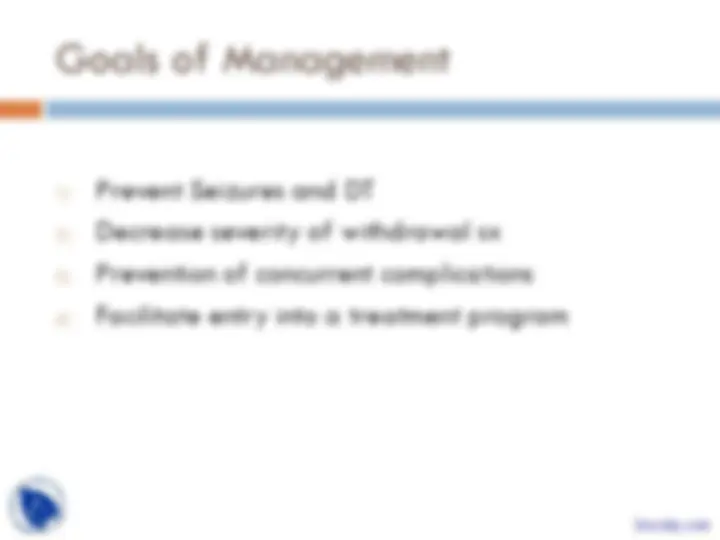
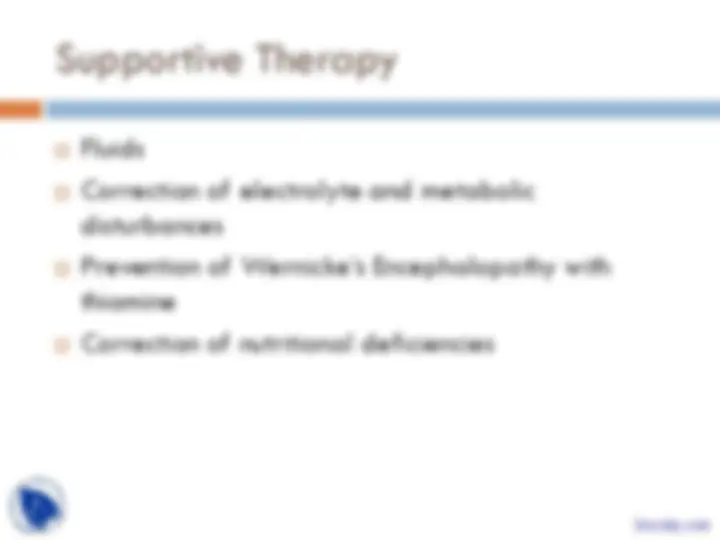
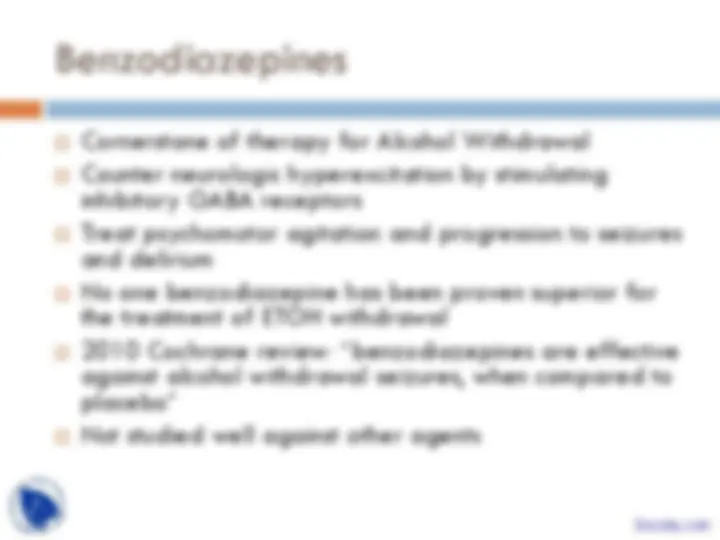
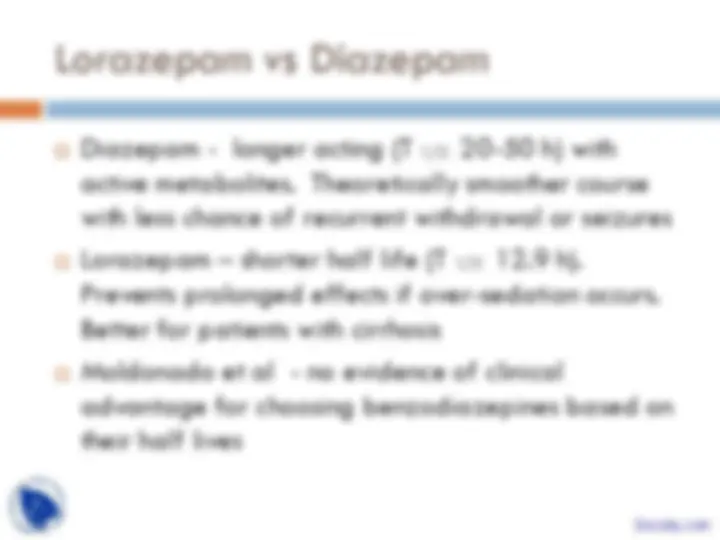
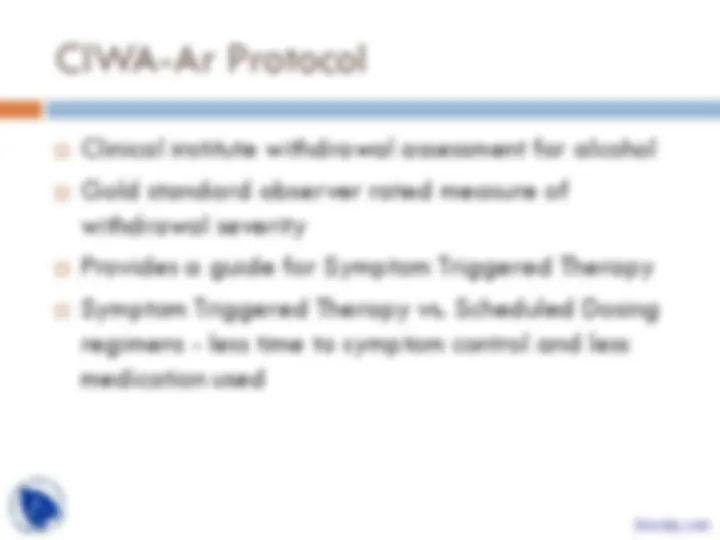
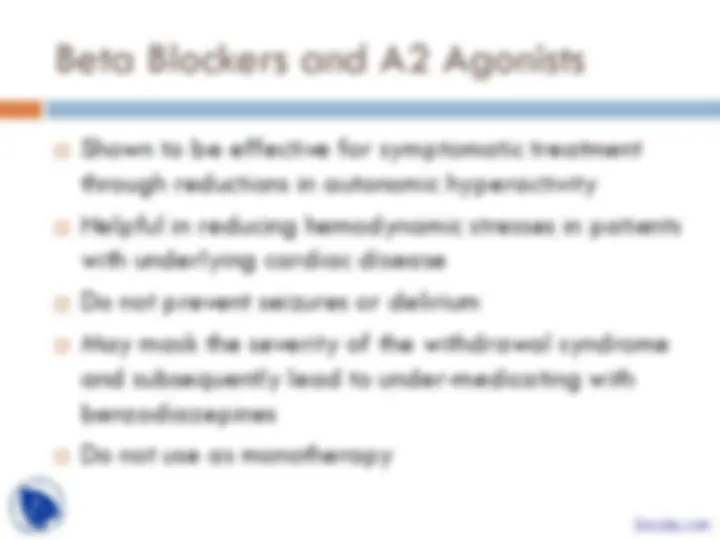

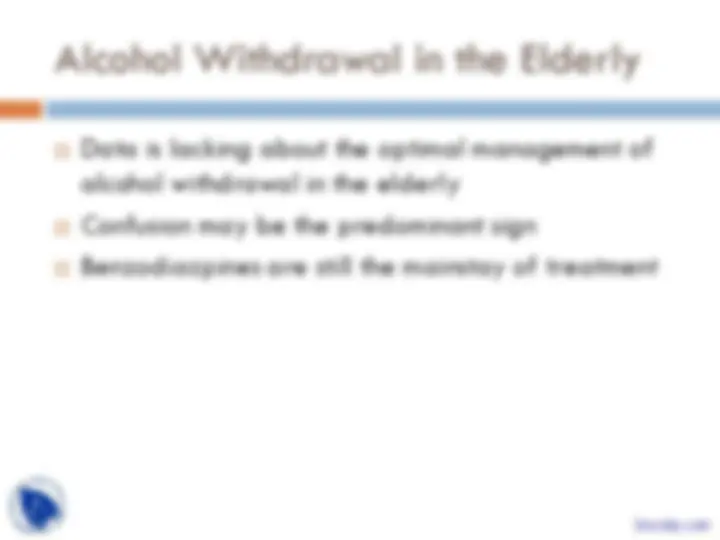
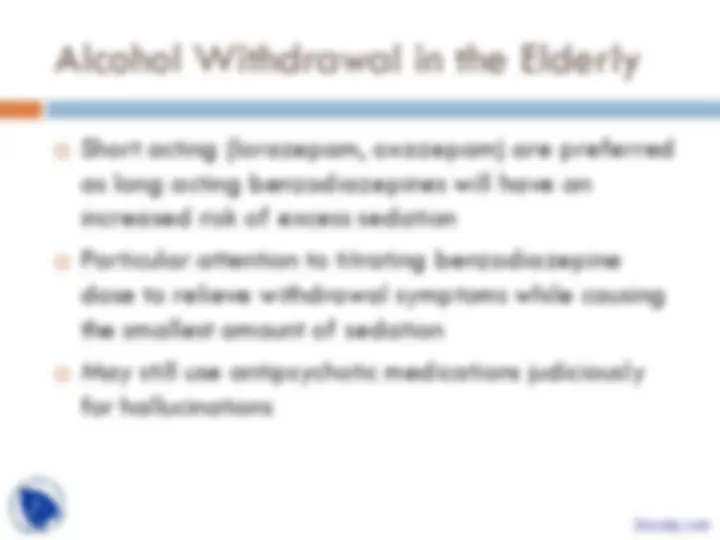


Study with the several resources on Docsity

Earn points by helping other students or get them with a premium plan


Prepare for your exams
Study with the several resources on Docsity

Earn points to download
Earn points by helping other students or get them with a premium plan
Community
Ask the community for help and clear up your study doubts
Discover the best universities in your country according to Docsity users
Free resources
Download our free guides on studying techniques, anxiety management strategies, and thesis advice from Docsity tutors
An in-depth analysis of alcohol abuse in the elderly, focusing on the differences in withdrawal syndrome and its treatment in this age group. Various patterns of alcohol consumption, special considerations, acute and chronic effects of alcohol, and the diagnosis and management of alcohol withdrawal. It also discusses the use of benzodiazepines, lorazepam vs diazepam, ciwa-ar protocol, and other medications in treating alcohol withdrawal in the elderly.
Typology: Slides
1 / 27

This page cannot be seen from the preview
Don't miss anything!




















90 year old Female
Lives with son – on vacation
Admitted for FTT
Consult -? GARP
Develops increasing confusion during hospital stay
Tremulous, tachycardic, anxious
How does alcohol abuse affect the Elderly?
How is alcohol withdrawal syndrome different in the Elderly?
How is alcohol withdrawal treated in the Elderly? Special considerations?
Early onset
lifelong pattern of drinking and are now elderly
2/3 of elderly alcoholics
More likely to have chronic health problems due to alcohol – liver disease, organic brain syndrome, co- morbid psychiatric disorders
Decreased body water – reach higher blood alcohol concentration quicker, with lower doses
Slower metabolism of ETOH in gut and liver
Polypharmacy and drug interactions
More prone to alcoholic gastritis
Increased risk of delirium, falls
Self medication
Inhibits neuro-excitatory NMDA receptors and reduces release of their NT Glutamate
Activates neuro-inhibitory GABA receptors
Leads to anxiolysis, sedation, motor incoordination
NMDA function increases
GABA function decreases
Increased excitation and decreased inhibition
Leads to psychomotor agitation and autonomic excitability
*Worse in patients with chronic ETOH neural changes
The 4 clinical states of ETOH withdrawal
Sx typically develop between 6-24 hrs after the last drink
Due to increased levels of circulating catecholamines
HTN, tachycardia, palpitations, diaphoresis, GI tract upset, tremors, hyper-reflexia, irritability, agitation, anxiety
Clear sensorium
12-48 hrs after last drink
Generalized tonic-clonic convulsions
Usually in patients with long history of alcoholism
Usually singular episode or a brief flurry over a short period
Prolonged/recurrent/status epilepticus should prompt investigation into other etiology
48-96 hrs after last drink
Lasts 1-5 days
Delerium combined with autonomic hyperactivity and alcoholic hallucinosis
Clouded sensorium, hallucinations, disorientation, tachycardia, HTN, fever, diaphoresis, agitation
Metabolic and electrolyte disturbances due to hypermetabolic state
Mortality rate of around 5% when treated
Prevent Seizures and DT
Decrease severity of withdrawal sx
Prevention of concurrent complications
Facilitate entry into a treatment program
Fluids
Correction of electrolyte and metabolic disturbances
Prevention of Wernicke’s Encephalopathy with thiamine
Correction of nutritional deficiencies